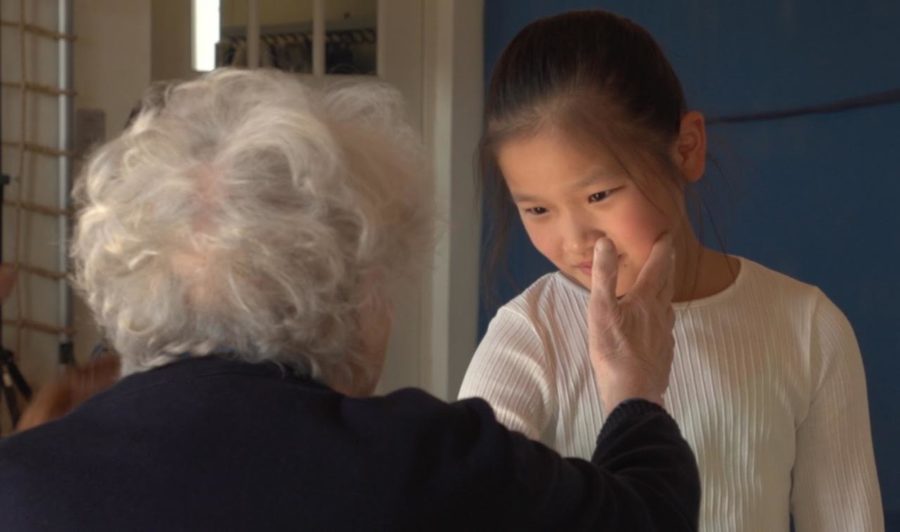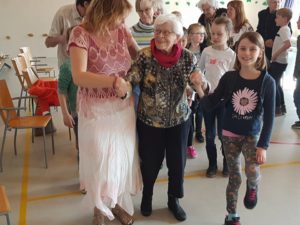Blog
The poetry of the encounter

A blog by Ron Otten, Friends of Biodanza Foundation, the Netherlands.
What is the best way to connect older adults with dementia with young children? The Hand-in-Hand Dance Program in the Netherlands is doing this by stimulating non-verbal contact between the two generations through dance and music. Education and health care practitioners are witnessing the impact.
“I see behavior of my children that I never thought possible,” reports one teacher. Speaking on behalf of older adults who participated in the Hand-in-Hand Dance Programme, one health care worker comments, “Our elderly don’t only have to receive, but they can give. They give so much love and tenderness. That moves me to tears.”
The dance form at the heart of Hand-in-Hand is Biodanza, which means “Dance of Life”. It is a dance style that can be done alone, in pairs or in small groups. It doesn’t require learning complicated dance moves. Instead the idea is to move according to your own abilities. Essential elements of Biodanza are the synchronization between dancers, the expert guidance by biodanza teachers and music that is accessible for all ages.
In 2018 the Friends of Biodanza Foundation in the Netherlands carried out a pilot project in which 9 year-old girls and boys from a primary school and older adults with dementia participated in dance workshops which prepared them for a joint dance afternoon. The reactions were inspiring. Teachers and caregivers witnessed behaviours and responses in the participants that surprised them and touched their heart. A tough boy who shyly received the caress of an old lady down his cheek, the hundred-year-old who came out of her wheelchair to take a walk with a girl, are just a few striking examples. You can view a short film of the pilot here.
The Hand-in-Hand model involves eight dance workshops in total, all of which last one hour. Both groups experience a number of introductory workshops, in which dance is first introduced amongst peers. For the children this means group discussions on topics such as: making contact, older adults and vulnerability as well as dance. The final two workshops are the intergenerational dance experiences. To complete this dance cycle, children and the older adults draw a picture of their experiences. These have been displayed in public buildings in the form of a traveling exhibition designed to raise awareness about this powerful intergenerational encounter. Not alone does Hand-in-Hand introduce participating schools and care institutions to the possibilities and value of intergenerational contact through dance for their target groups, it also stimulates more regular contact between these age groups and stimulates further IG initiatives.

After the initial experience of the pilot, more dance workshops were requested by both the school and the nursing home. The positive results led to the rolling out of the Hand-in-Hand program so that more children, older adults and dancers might benefit.
To date, 60 Dutch dance teachers have already taken preparatory training as part of Hand-in-Hand and schools and care institutions are now being approached.
Across the world, there is a growing interest amongst the international Biodanza dance community in developing intergenerational initiatives. The Hand-in-Hand program is supported by the IBF, the international organization for Biodanza teachers and Biodanzaschools.
If you are you interested in organizing an intergenerational dance initiative either in the Netherlands or elsewhere, please contact us through info@vriendenvanbiodanza.nl. We would be happy to share our knowledge, experience and international contacts with you. The ambition of the Friends of Biodanza Foundation is to make the whole world dance. Please also share this blog with your friends and colleagues.